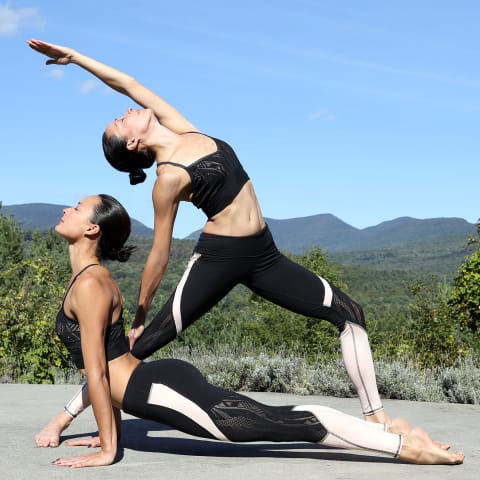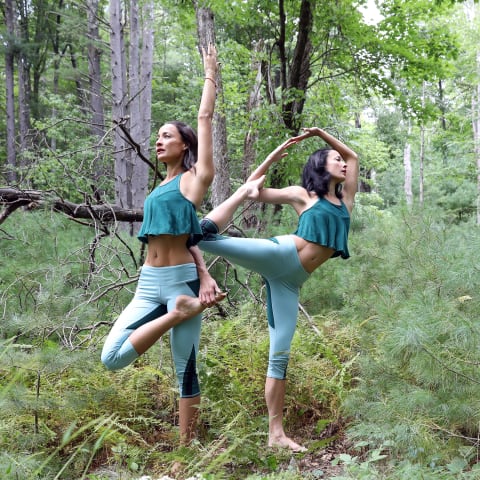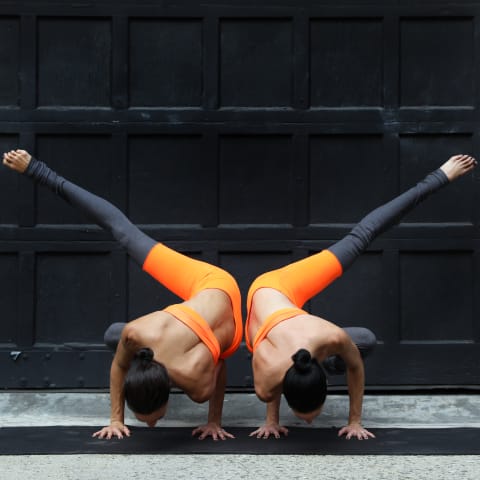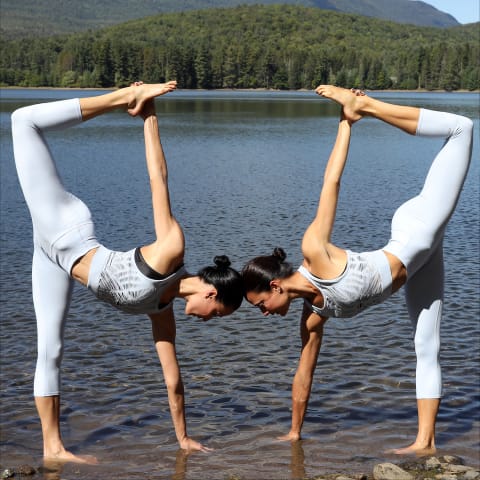Advertisement
Your Body Has Energy Centers Other Than Chakras. Here's What You Need To Know About Your Vayus

There is a pure yogic energy that moves through the world and flows in each and every one of us. This energy is called prana, and it is carried through our bodies through something called a vayu. Vayu translates to "wind," and our vayus are responsible for transferring energy throughout the body.
Although vayus are subtle, they have a huge impact on how our bodies feel, so learning to move with their natural rhythms is vital for our health.
So take a moment to reconnect with yourself by exploring the energy within you and aligning the mind and body with the world around you. Here's what you need to know about each of the five vayus:
1. The prana vayu.

The prana vayu is an inward-moving force that brings vital energy to our bodies and minds. Everything we take in—from the air we inhale to the food we consume and the thoughts and emotions that we feel—is brought into us with the prana vayus. It is situated in the head and centered in the third eye, and its energy pervades the chest region, allowing our heart and lungs to take in new life energy. This vayu allows us to see the world in all its glory and motivates us to see and take action for all of life's possibilities.
Practicing pranayama and heart-opening asanas will get your prana vayus flowing. If you want to connect with your prana vayu, practice bow pose, camel pose, cobra pose, dancer pose, and bridge pose.
2. The apana vayu.

The apana vayu governs the downward and outward flow of energy in our bodies. Apana energy nourishes the organs of digestion and reproduction, it is situated in the pelvic floor, and its energy nourishes the organs of digestion and reproduction.
Since it is situated in the pelvic floor, its energy pervades the lower abdomen. What we release and let go of in life and in our bodies is just as important as what we receive and take in. The balance of the prana and the apana vayus is the key to having a healthy mind and body. If we release too much, there will not be enough to nourish us. And if we hold everything in, it can become toxic.
Much like breathing, we need to find the balance of allowing new life energy in with each inhale and releasing anything that no longer serves us with each exhale. To activate your apana vayu, focus on rooting down in standing poses such as forward folds, which will bring a release to the mind and fill it with a sense of purpose.
You can also try seated forward fold, spread-legged standing forward bend, tree pose, and bound angle pose.
3. The samana vayu.

The samana vayu unites the upward energy of prana and the downward energy of apana. Here, the inner winds of the upper and lower body meet at the abdomen. Like a whirlpool of converging energy, our samana vayu churns around the navel while digesting all substances: food, air, experiences, emotions, and thoughts.
Samana creates a powerhouse in our core, where we can find balance on and off the mat. Our self-confidence arises from this fire of converging energies, giving us the motivation for real transformation.
In our practice, we can activate this life energy by focusing on twists and abdominal work, which will neutralize and fire up the core. Find your center and know all of that power with poses like revolved side-angle pose, crow, chair pose, reclining abdominal twist, and boat pose.
4. The udana vayu.

Udana is the upward-moving breath, which directs the flow of prana from the lower to the higher planes of consciousness. The udana vayu is very important to your spiritual practice, as it brings prana to the energy centers deep in your brain and the central axis of your subtle body. This energy is most active between the heart and the head and rules the throat center.
This vayu governs speech, expression, and your growth and metabolism through the thyroid glands. The udana vayu is an ascending force, including poses that direct energy to the head, neck, and upper back, and poses that turn the body upside down are good for activating the udana.
Just like a well-rounded practice, we warm up the body and often end with an inversion, so we connect with our prana vayu to go inward, our apna vayu to anchor, our samana vayu to unite them, and finally our udana vayu to ascend the mind and body toward a state of deep relaxation and meditation.
To connect with the udana vayu, go for fish pose, headstand, shoulder stand, and handstand.
5. The vyanu vayu.

We’ll end our vayu series with the fifth inner wind called vyana, which integrates and balances all of the vayus and is called the "omnipresent air." Vyana's expansive and nourishing energy governs all of the movement in our muscles and joints, bringing our bodies to life with motion.
This vayu dictates the blood flow and the electrical impulses through our nervous system and the movement of fluid through the lymphatic system. Standing poses are particularly beneficial because they involve movement of every part of the body, from the center outward.
As we bring awareness to the expanding energy traveling outward through the body, our minds can drift inward to the source of all prana. We can never master all of the magical energy running through us, but we can try to be aware of how energy is running through us and know that we can tap into this life force. Understand where your energy is taking you and how it is affecting those around you.
This article is co-written by Kimmy and Crissy Chin.
For more yoga inspiration, find out how doing yoga changed this athlete's body, and find out what happened during one woman's 30-day Bikram yoga challenge.
Watch Next
Enjoy some of our favorite clips from classes
Enjoy some of our favorite clips from classes
What Is Meditation?
Mindfulness/Spirituality | Light Watkins
Box Breathing
Mindfulness/Spirituality | Gwen Dittmar
What Breathwork Can Address
Mindfulness/Spirituality | Gwen Dittmar
The 8 Limbs of Yoga - What is Asana?
Yoga | Caley Alyssa
Two Standing Postures to Open Up Tight Hips
Yoga | Caley Alyssa
How Plants Can Optimize Athletic Performance
Nutrition | Rich Roll
What to Eat Before a Workout
Nutrition | Rich Roll
How Ayurveda Helps Us Navigate Modern Life
Nutrition | Sahara Rose
Messages About Love & Relationships
Love & Relationships | Esther Perel
Love Languages
Love & Relationships | Esther Perel

















